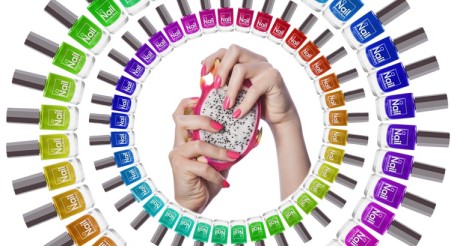The omnipresence of digital tools in our daily life has tremendously changed our shopping experience. The digital has changed drastically the way customers consume products and interacts with each other. Nowadays we are talking about the power of the community and it is essential for businesses to integrate the community in their marketing plans. Have you ever smelled a fragrance you loved very much in a crowd and wondered what it was? Most of the advertisements we see on tv or read in magazines manage to stimulate with success most of our senses (Touch, Sight and hearing). The sense of smell is a little bit behind regarding the technology developed to incorporate it within the customer experience. Sensory Marketing has still some progress to make.
Since 2010, many companies tried to build a bridge between the digital and fragrances through a broad range of innovations. These Digital Scent Technologies cover 3 key applications: Detecting, transmitting and receiving scents through digital tools. In March 2012, Dr Marvin Edeas initiated the project on olfactory digitization. The Digital Olfaction Society (DOS) key objective is to promote digital smell technologies which have a real impact on our lifestyle.
Sensory branding, when scents become a new dimension for the consumer’s experience
Fragrances as opposed to audio or visual stimuli are more difficult to deal with. Controlling how long and how strong we want the consumers to smell them is quite challenging. One of the main worries being the clash of odors.
The Californian ready-to-wear company Abercrombie & Fitch built up its customer’s experience around 4 of our 5 senses (Smell with its fragrance Fierce N°8, Hearing: loud electro music is played in the shop giving the impression to be in a night club, Touch with its clothes and Sight: most of the shop is lunged into darkness excepted the clothes).
Ultraviolet by Paul Pairet, Ultraviolet is the first restaurant of its kind attempting to unite food with multi-sensorial technologies. The restaurant engages not only the sense of taste, but also sight, sound, touch, and smell.

Using scents as signal
Have you ever thought about replacing your ringtones by a scent, sending a fresh smell of roses to your love one or waking up with the smell of coffee?
Capitalizing on the strong link we make between memory, emotion and smell, Sensorwake uses scents to wake you up motivated and in a good mood. According to them it takes around 2 min for someone to wake up.
Capture and share
Nowadays everyone can share pictures or video in a blink of an eye. Slightly behind some companies developed technologies enabling us to capture scent and re-create it for our own pleasure.
In 2013, Amy Radcliffe developed The Madeleine, an analogue odour camera. The Madeleine captures the odorants (molecules components of the scent) present in the Headspace. The Headspace is simply the volume of air above the scented surface/flower. It is composed of all the volatile ingredients evaporating in the air. The Madeleine analyses the Headspace and identify the composition of it. The customer sends the result to a laboratory that will later on compound the fragrance. Knowing the composition, you can share it with people.

Following a similar idea, David Edwards, a Harvard professor and head of science/art innovation lab Le Laboratoire, just unveiled the first commercial version of his oPhone a mobile messaging platform for sending aromatic emoticons. Sometimes you may find challenging to describe an odour with words and images. Thanks to its mobile application one can describes the olfactive notes. Then the description is sent to the oPhone and the scent can be smelled by the person you sent it to.
A leap in the future of Digital Scent Technologies
We covered key applications of digital scent technologies. All of them required some additional tools in order to work.These innovations set the scene for a groundbreaking one: The Integration of Digital Scent Technologies in a smartphone. In 2016, the smartphone penetration rate in the world was 28% against 70% in the US. It is expected to reach 34,6% in 2019.
Huawei, the Chinese telecommunication equipment company is currently working on a smartphone that will be able to smell, taste, hear and see like humans do. The smartphone will be fitted with an air sensor able to detect different smells and distinguish sweet from sour.
For brands and fragrance retailers, the challenge lies in their ability to offer a tailored-made experience at any given step of their consumers’ shopping journey. Nowadays fragrance consumers still need to go visit Sephora, Marionnaud or Nocibé in order to smell fragrances. Retailers could capitalize on these technologies and incorporate them in their mobile application.
We are not there yet but the future of Digital Scent Technlogies is very promising.
Here are 3 key applications we would like to see in the future:
- The Shazam of fragrances: Capturing fragrances wherever we are.
- Sharing Scent: This would enable brands and retailers to provide a fully immersive experience to their customers.
- Scent Diagnostic: Scent diagnostics are not new but if we could integrate them in our smartphone we could do our shopping from home without stepping in a shop. Our smartphone would suggest us fragrances we might like based on our purchase history or fragrances we Shazamed. We would then smell them from our smartphone.


 In 2014 L’Oréal introduced Makeup Genius and its virtual mirror enabling consumers to digitally try color cosmetic products. A lot of mobile applications with similar feature were released later on. In 2016, Sephora introduced its new app
In 2014 L’Oréal introduced Makeup Genius and its virtual mirror enabling consumers to digitally try color cosmetic products. A lot of mobile applications with similar feature were released later on. In 2016, Sephora introduced its new app  Numerous brands have developed devices able to scan/copy colors and create customized makeup (
Numerous brands have developed devices able to scan/copy colors and create customized makeup (